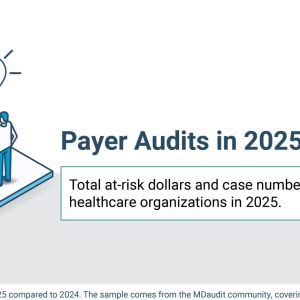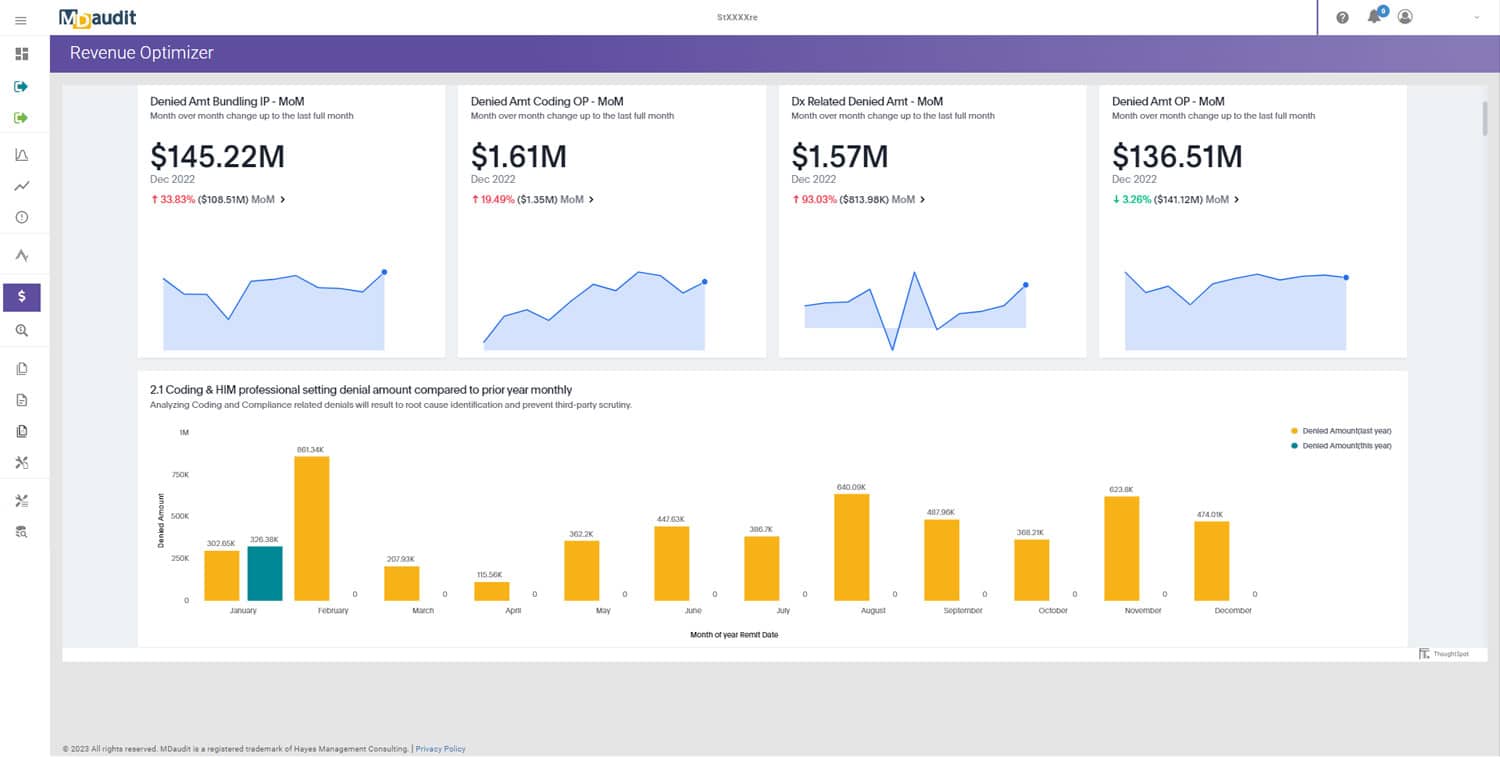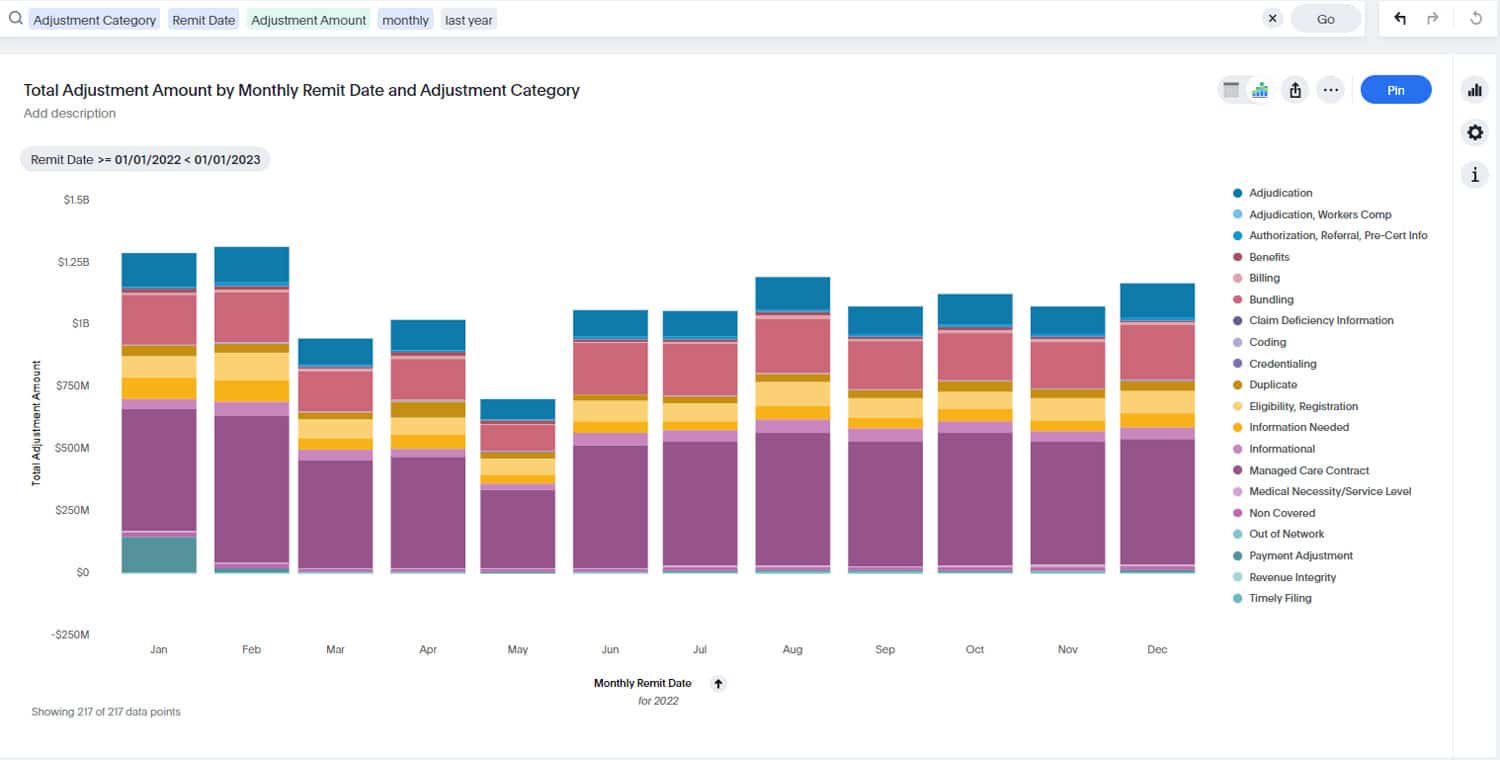Clinical Documentation Improvement (CDI) and coding teams share a single objective: translate the clinical story into accurate, defensible claims that reflect patient acuity and align with payer policy. When CDI and coding operate in silos, documentation gaps go unresolved, denials climb, and rework expands. When they operate as a single, feedback-driven unit, organizations prevent avoidable denials, strengthen compliance posture, and accelerate cash.
At MDaudit, our role is to make that collaboration practical. With Coder Workflow, Audit Workflows, and Revenue Optimizer, CDI specialists and coders work from the same source of truth—using audit findings to refine documentation, educating to close specific gaps, and measuring the impact in denial reductions and first-pass yield. This post outlines a pragmatic approach you can adopt immediately.
Why collaboration reduces denials
Documentation is the first line of defense
Most clinical denials trace back to the medical record: missing specificity, incomplete problem lists, unclear medical necessity, or discrepancies between clinical notes and coded data. CDI clarifies the narrative; coding ensures it is translated correctly. Together, they create clean claims that survive payer scrutiny the first time.
Shared incentives minimize rework
Every denial triggers manual costs across Health Information Management (HIM), Clinical Documentation Improvement (CDI), and Revenue Cycle Management (RCM). A shared set of goals—lower denial rates, fewer post-bill edits, faster query turnaround—aligns daily work and makes collaboration tangible.
Analytics turn insight into action
Raw denial counts don’t change behavior. Normalized views by payer, service line, and denial category help teams prioritize what to fix first. With Revenue Optimizer, leaders see which documentation issues create the most financial risk, and they can focus CDI and coding time where it matters most.
Core workflows that tie CDI and coding together
Concurrent reviews
CDI specialists review encounters during the episode of care and query clinicians while details are fresh. Coders participate by flagging likely Diagnosis Related Group (DRG) impacts and payer-specific requirements before discharge. The result is fewer late queries and fewer retroactive edits.
Audit-driven feedback
Audits surface specific patterns: diagnosis specificity gaps, missing devices or laterality, or insufficient justification for high-cost drugs. Audit Workflows capture these findings consistently, route follow-ups, and link each gap to a corrective action—provider education, a template update, or a pre-bill edit.
Structured queries and standardized language
Ambiguity creates denials. A compliant, structured query process—owned jointly by CDI and coding—ensures clinical intent is clarified without leading. Agreed language for common scenarios (sepsis criteria, heart failure acuity, malnutrition) reduces variation and speeds responses.
Targeted education with measurable outcomes
Education should be specific, brief, and tied to real cases. With Coder Workflow, teams create case-based packets that show the before/after documentation and code assignment, then track whether denials fall in the following months.
Payer-specific playbooks
Cross-payer analysis often shows one carrier denying at far higher rates than peers for the same service. CDI and coding collaborate on payer playbooks that specify required elements, documentation phrasing to avoid disputes, and pre-bill checks. When the pattern proves to be external, managed care teams bring that evidence into negotiations supported by Revenue Optimizer.
Operating model and governance
A single, shared backlog
Bring CDI, coding, and revenue integrity into a weekly working session with one prioritized list of documentation issues. Each item includes the root cause, owners, and due dates. Work from the same queue inside MDaudit, so progress is visible to all stakeholders.
Role clarity without handoffs
- Clinical Documentation Improvement (CDI) confirms clinical accuracy and medical necessity support.
- Coders validate code assignments and ensure compliance with payer edits.
- Physician advisors adjudicate clinical ambiguity and align on definitions.
- Revenue integrity quantifies financial impact and verifies that changes reduce denials.
Standardized taxonomies
Use a single taxonomy for documentation deficits and denial reasons across sites and specialties. Consistency enables accurate trending and prevents teams from arguing definitions instead of fixing issues.
Cadence that builds momentum
A monthly executive review highlights top documentation risks, the financial impact, and progress from the last cycle. Quarterly, retire solved themes and onboard new ones. Sustained cadence keeps improvements compounding.
Scenarios that show collaboration at work
Inpatient cardiac: preventing DRG downgrades
Pattern: secondary diagnoses driving Major Complication or Comorbidity (MCC) status are inconsistently documented.
Action: CDI builds a checklist for cardiac service lines; coders flag potential MCC/CC cases during concurrent review; physician advisors align on criteria.
Result: DRG downgrades fall, case mix accuracy improves, and resubmissions drop.
Outpatient infusion: reducing medical necessity denials
Pattern: one commercial payer denies certain infusion drugs at a much higher rate than peers.
Action: cross-payer analytics in Revenue Optimizer quantify the outlier; CDI and coding add diagnosis-to-drug pairing reminders to templates; prior authorization details are captured consistently.
Result: denials decline substantially; remaining disputes are escalated with comparative evidence.
Telehealth: aligning documentation with policy
Pattern: telehealth notes lack modality, time elements, or key exam findings.
Action: CDI and coding co-author telehealth templates with required fields; concurrent review flags gaps before claims are finalized.
Result: cleaner claims and fewer payer questions during post-payment review.
Orthopedics: laterality and device details
Pattern: edits and denials related to missing laterality, implant model, or revision status.
Action: coders and CDI build a “surgical essentials” checklist; scrub notes pre-bill via Audit Workflows; educate on common documentation pitfalls.
Result: post-bill edits fall; perioperative teams adopt better documentation habits.
Making education practical (and brief)
Case packets over slide decks
Short case packets beat long lectures. Show the original note, the clarified version, and the resulting code assignment. Provide two or three examples per topic and include the specific payer language that triggered denials.
Micro-learning and repetition
Five-minute refreshers delivered where clinicians work are more effective than quarterly marathons. Repeat high-value topics every few weeks until metrics move.
Close the loop with measurable KPIs
Track:
- Query response times
- Share of concurrent vs. post-discharge queries
- Denial rates for targeted themes
- First-pass yield in affected service lines
- Documentation completeness rates (template adherence)
Tie each education sprint to one or two KPIs and report outcomes back to clinical leaders.
Technology that keeps teams aligned
A shared platform
A single system reduces swivel-chair work. With Coder Workflow and Audit Workflows, CDI and coding see the same cases, the same findings, and the same deadlines.
Analytics everyone can use
Revenue Optimizer translates documentation gaps into financial terms that executives understand. Show the cost of a single theme, the trajectory after intervention, and the payers most affected.
AI that respects human judgment
Our AI-Powered Technology surfaces patterns and suggests next actions without replacing expert review. Teams can ask natural-language questions, isolate at-risk claims, and focus scarce attention where it will change outcomes.
Resources for HIM and coding leaders
MDaudit’s overview for HIM & Coding outlines how organizations monitor coder risk, detect anomalies, and run coder audits with integrated rebuttals and reporting. Point education and reviews to where risk is rising, not where it has already peaked.
Implementation checklist
- Baseline documentation risk by payer, service line, and denial category. Use one taxonomy and publish the top five themes.
- Stand up a weekly CDI-coding huddle with a single work queue and owners. Keep it to 30 minutes; focus only on the published themes.
- Convert two themes into playbooks with checklists, template updates, and example language. Roll them out to the smallest willing pilot and measure for four weeks.
- Create case-based education inside Coder Workflow. Aim for two pages per topic.
- Instrument KPIs in Revenue Optimizer: first-pass yield, denial rate in theme categories, post-bill edit rates, query turnaround time.
- Amplify what works. If a checklist moves metrics in one service line, adapt it, don’t reinvent it. Promote wins in monthly executive reviews.
- Retire themes deliberately. When a metric holds improvement for two quarters, archive the playbook and promote a new theme from the backlog.
Executive view: connect collaboration to outcomes
Leaders care about predictability. A mature CDI-coding partnership reduces volatility by preventing denials upstream, compressing cycle times, and lowering audit exposure. Use executive views from the platform to show:
- The top documentation risks and their dollar impact
- Trends after each intervention sprint
- Payer outliers that warrant managed-care engagement supported by cross-payer views in Revenue Optimizer
What “good” looks like in six months
- Denials tied to the targeted themes fall materially in the pilot service lines.
- First-pass yield increases and post-bill edits decline.
- Query turnaround times shorten; more clarifications occur concurrently.
- Education is continuous and lightweight, not episodic and burdensome.
- CDI, coding, and revenue integrity operate from one queue with shared metrics and fewer handoffs.
Take the next step
If your CDI and coding teams are tackling the same problems from different rooms, it’s time to centralize the work and the data. MDaudit brings the workflows, analytics, and AI needed to make collaboration routine—and measurable. Explore Coder Workflow, Audit Workflows, Revenue Optimizer, and our broader AI-Powered Technology. To discuss your environment and priorities, visit our demo request page or contact us.






